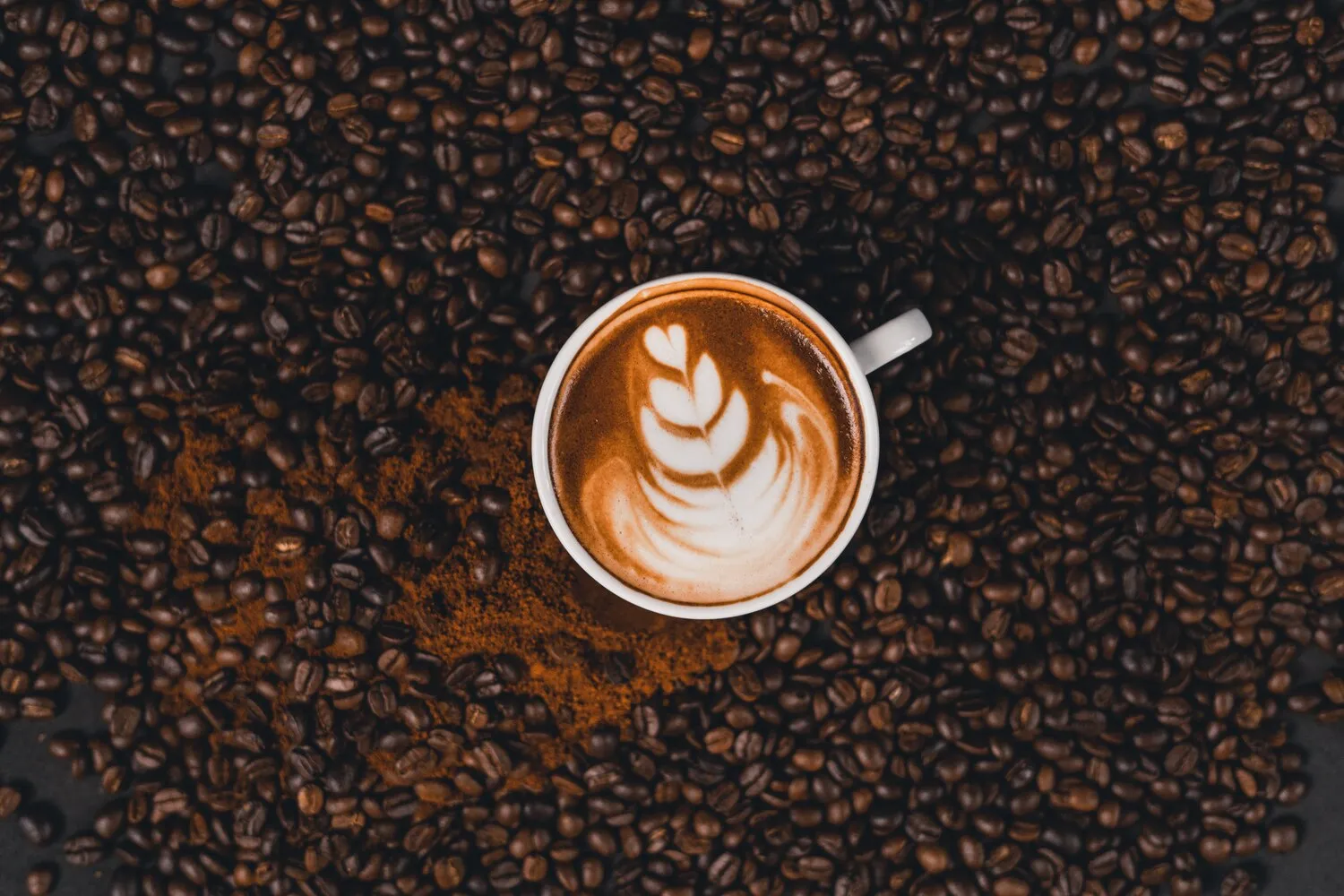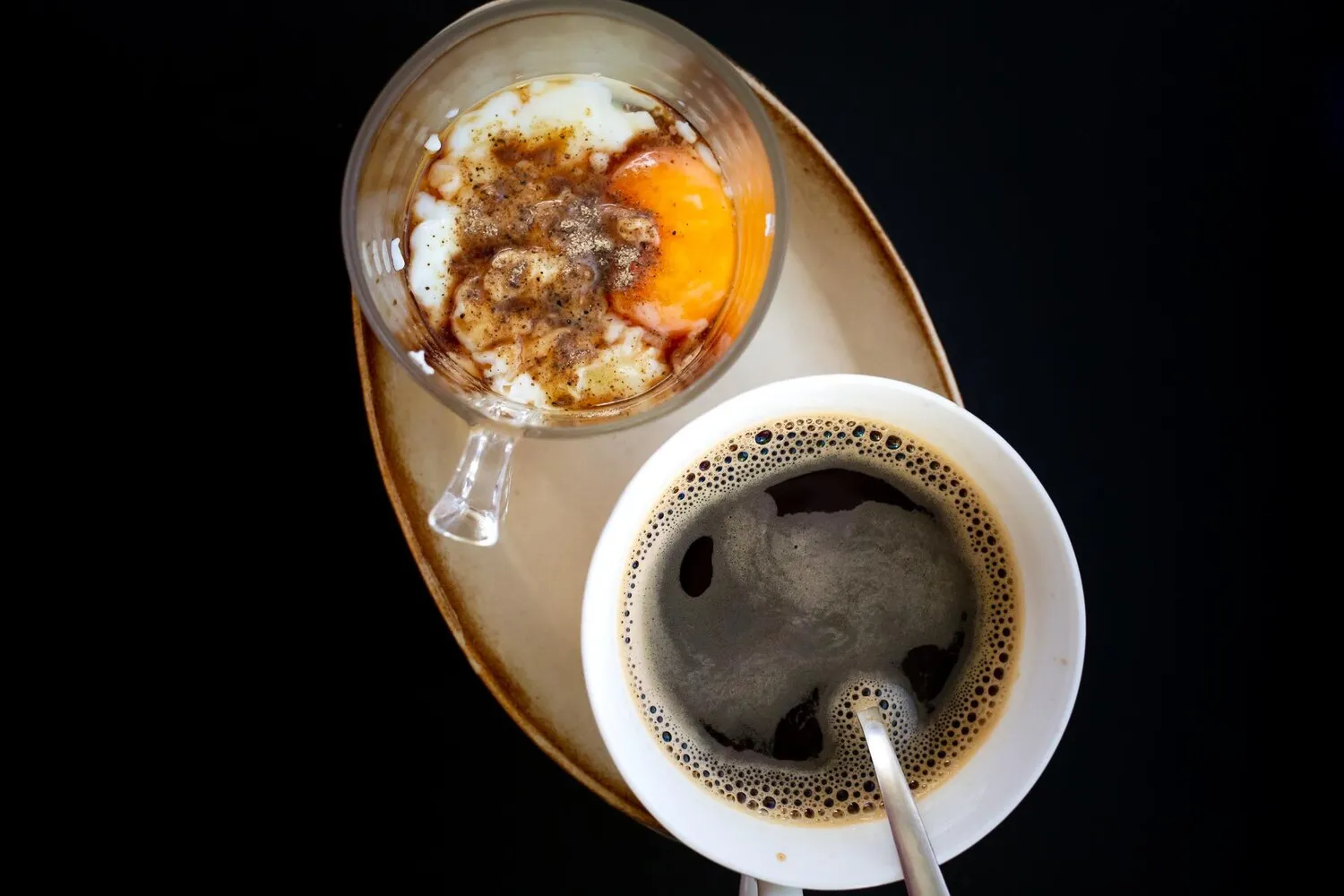
Coffee
Espresso-based coffee drinks, including lattes, cappuccinos, mochas, and Americanos. Hot, iced, and blended options are usually available.
Nutrition Facts
* The % Daily Value (DV) tells you how much a nutrient in a serving of food contributes to a daily diet. 2,000 calories a day is used for general nutrition advice.
The Human Bean
Coffee cultivation and consumption spread from the Middle East and Africa to Europe, particularly Italy. The invention of the espresso machine in the late 19th and early 20th centuries in Italy revolutionized coffee preparation. From there, espresso-based drinks evolved, spreading globally and adapting to various cultures and tastes.
Espresso-based coffee drinks have become deeply ingrained in global coffee culture, symbolizing social interaction, productivity, and a moment of indulgence. Coffee shops serve as meeting places, workspaces, and community hubs, while the drinks themselves are often customized to individual preferences.
Coffee Shops as Social Hubs
Coffee shops around the world have evolved into important social spaces, where people meet for conversation, work, or simply to relax and observe their surroundings. The ritual of ordering and enjoying a coffee drink is often a key part of the experience.
Customization and Personalization
Espresso-based drinks are highly customizable. From milk alternatives to flavored syrups and foam art, individuals can tailor their drinks to match their unique tastes and dietary preferences.
Global Variations and Adaptations
While the core recipes remain fairly consistent, regional variations and adaptations exist worldwide. Local ingredients, brewing methods, and cultural preferences influence how espresso-based drinks are prepared and enjoyed.
Espresso-based drinks primarily feature a strong, concentrated coffee flavor balanced with milk, chocolate, or water, depending on the specific drink. The roast level of the coffee beans significantly impacts the overall flavor profile, ranging from bright and acidic to dark and roasty.
Espresso provides the foundational bitter, intense coffee flavor. Lattes offer a smooth, creamy flavor from steamed milk. Cappuccinos emphasize the foamed milk, providing a lighter, airier texture and slightly less intense coffee taste. Mochas introduce sweetness and chocolate notes, often using chocolate syrup or powder. Americanos dilute the espresso with hot water, creating a similar strength to drip coffee but with a different flavor profile derived from the espresso extraction method. Hot, iced, and blended variations further affect the perceived flavors and textures.
Espresso Extraction
Proper tamping, grind size, and water temperature are crucial for a balanced and flavorful espresso shot. A consistent extraction yields the best results.
Milk Steaming
The quality of the steamed milk significantly impacts the texture and sweetness of the drink. Microfoam, created by introducing air into the milk, is essential for lattes and cappuccinos.
Flavor Balancing
Balancing the bitterness of the espresso with the sweetness of milk or chocolate is key to creating a harmonious drink. Experiment with different ratios to find your preferred balance.
Milk Alternatives
Many espresso based drinks can have their milk substituted with alternatives such as soy, almond, oat, and coconut milk to fit vegan and/or allergy restriction needs.
Explore additional Coffee dishes and restaurants
Explore CoffeeDiscover top dining spots and culinary experiences in Sterling.
Explore SterlingLearn more about the food culture, restaurant scene, and culinary heritage of United States.
Explore United States
